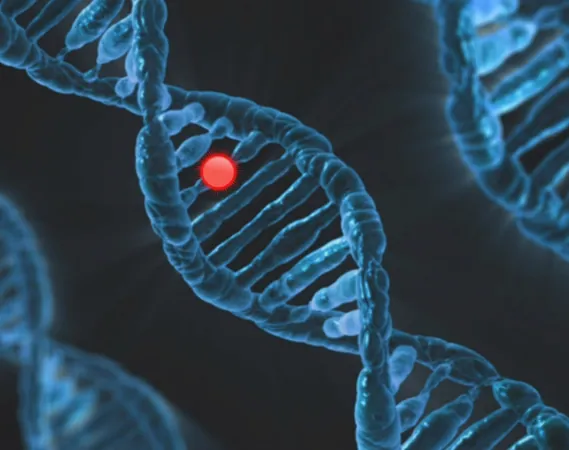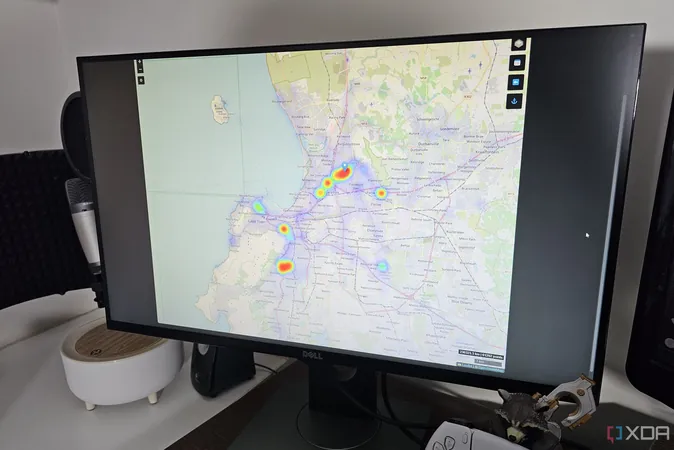
Revolutionary Algorithm Uncovers Hidden Disease-Causing Variants in Our DNA!
2025-04-17
Author: Ming
Groundbreaking Research Shakes Up Genetic Understanding
In an astonishing breakthrough, researchers at Children’s Hospital of Philadelphia and the Perelman School of Medicine at the University of Pennsylvania have harnessed an innovative algorithm to uncover mutations lurking in the noncoding sections of our DNA—regions that make up the bulk of the human genome!
Unlocking the Mystery of Noncoding DNA
Traditionally thought to be 'junk,' over 98% of our DNA doesn’t directly create proteins. Yet, these noncoding areas can harbor variants that significantly raise the risk of common diseases. The researchers' findings, detailed in the American Journal of Human Genetics, suggest that these noncoding variants could be pivotal in identifying disease risks across various health conditions.
The Challenge of Identifying Culprits
Although previous genome-wide association studies (GWAS) have hinted at disease-related segments, pinpointing the specific variant responsible has remained a daunting task. These tricky noncoding variants often cluster around transcription factor binding sites—crucial areas where proteins latch on to regulate gene activity.
A Smart Approach: Using 'Footprints' to Trace Variants
The research team likens their method to a police lineup: while many 'suspects' may be present, identifying the true culprit demands a keen eye. By employing ATAC-seq, a state-of-the-art genomic sequencing technique that reveals 'open' genome regions, alongside a deep-learning tool called PRINT, researchers successfully mapped out the 'footprints' of DNA-protein interactions.
Promising Results from Human Liver Samples
In their study of 170 human liver samples, the team identified 809 'footprint quantitative trait loci'—locations that shine a light on where these interactions occur, helping to clarify how different variants influence transcription factor binding strengths.
Looking Ahead: Transforming Genetic Research Into Treatments
With this groundbreaking data in hand, the researchers are eager to extend their techniques to investigate other organs and tissues, aimed at unveiling variants that might provoke a range of widespread diseases. First author Max Dudek expressed optimism that larger sample sizes could lead to the discovery of pivotal variants, potentially paving the way for revolutionary new treatments.
The Future of Genetic Medicine is Bright!
This pioneering study not only sheds light on the complexities of noncoding DNA but also sets the stage for future research that could transform how we diagnose and treat common diseases. The landscape of genetic medicine is shifting—could this algorithm be the key to unlocking tailored therapies that change lives?


 Brasil (PT)
Brasil (PT)
 Canada (EN)
Canada (EN)
 Chile (ES)
Chile (ES)
 Česko (CS)
Česko (CS)
 대한민국 (KO)
대한민국 (KO)
 España (ES)
España (ES)
 France (FR)
France (FR)
 Hong Kong (EN)
Hong Kong (EN)
 Italia (IT)
Italia (IT)
 日本 (JA)
日本 (JA)
 Magyarország (HU)
Magyarország (HU)
 Norge (NO)
Norge (NO)
 Polska (PL)
Polska (PL)
 Schweiz (DE)
Schweiz (DE)
 Singapore (EN)
Singapore (EN)
 Sverige (SV)
Sverige (SV)
 Suomi (FI)
Suomi (FI)
 Türkiye (TR)
Türkiye (TR)
 الإمارات العربية المتحدة (AR)
الإمارات العربية المتحدة (AR)